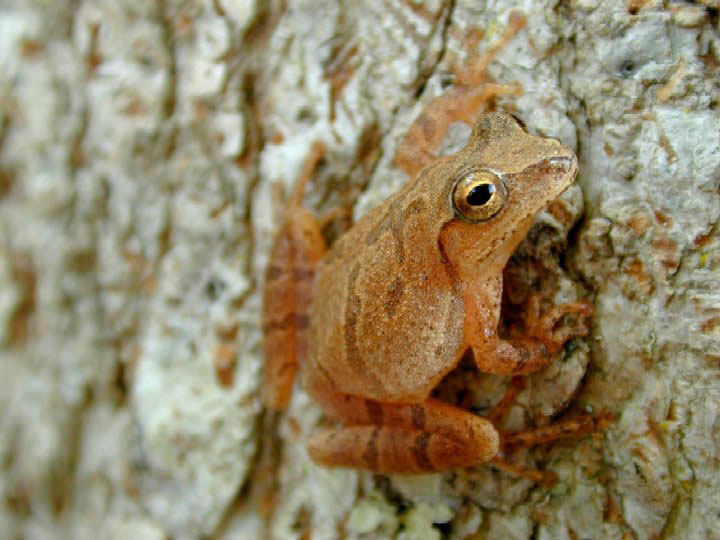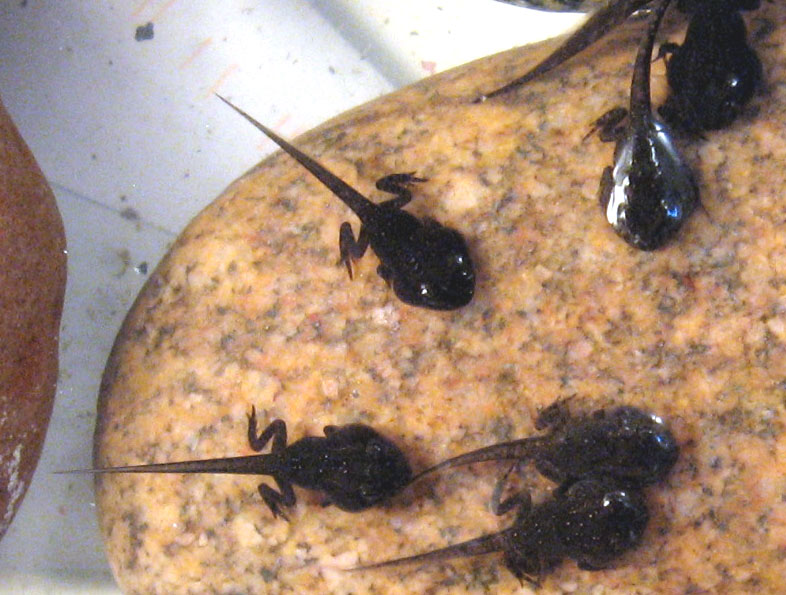 Other amphibian enthusiasts and I have long trudged about on cold, rainy spring nights in pursuit of one of North America’s most amazing amphibian events – the annual migrations of Tiger Salamanders, Spotted Salamanders, Wood Frogs, Spring Peepers and other early spring breeders. Laughed at even by other nature enthusiasts for our odd passions (birders, for example, get to watch Yellow Warblers nesting in blossom-laden trees on warm May mornings!), we are now having our day – plummeting amphibian populations worldwide are causing folks to take notice…and action.
Other amphibian enthusiasts and I have long trudged about on cold, rainy spring nights in pursuit of one of North America’s most amazing amphibian events – the annual migrations of Tiger Salamanders, Spotted Salamanders, Wood Frogs, Spring Peepers and other early spring breeders. Laughed at even by other nature enthusiasts for our odd passions (birders, for example, get to watch Yellow Warblers nesting in blossom-laden trees on warm May mornings!), we are now having our day – plummeting amphibian populations worldwide are causing folks to take notice…and action.
Amphibian Nights
Depending upon location, early March to mid-April is the height of the breeding season for many North American amphibians. Terrestrial species such as Spotted and Tiger Salamanders, Wood and Gray Treefrogs, Spring Peepers and others leave their burrows or hibernation sites and journey in huge numbers to their breeding ponds. The entire population of an area usually makes the trip at the same time (some, such as Spotted Salamanders, move in 2 waves, with males and female arriving on different nights). Pickerel and Leopard Frogs arrive in smaller groups, then mass together at the pond.
Either way, it makes for an unforgettable evening when you hit the timing just right and can watch such an event!
Amazing Goings-On in Small Places
 Most of the early spring breeders choose vernal (temporary) ponds in which to reproduce, as these cannot support fishes, the main enemy of eggs and larvae. In many cases, the “ponds” are mere depressions that fill with rain for a few weeks, and then dry out.
Most of the early spring breeders choose vernal (temporary) ponds in which to reproduce, as these cannot support fishes, the main enemy of eggs and larvae. In many cases, the “ponds” are mere depressions that fill with rain for a few weeks, and then dry out.
One of my favorite sites was just such a pond on the edge of someone’s lawn in Westchester County, NY. On one memorable night there I and a friend encountered Spring Peepers, Wood Frogs and Spotted Salamanders all reproducing at the same time…a short distance away another pool was alive with Marbled Salamander larvae – overwhelming!
Further Reading
For tips on getting involved, please see Volunteer Opportunities in Reptile and Amphibian Conservation.
A video of Spotted Salamanders in a breeding pond, along with the sounds of Spring Peepers, can be viewed here.
In Part II of this article we’ll take a look at some programs that are (finally!) being organized to help conserve the breeding places of native frogs and salamanders.
 That Reptile Blog – Reptile, Amphibian and Exotic Pet Care and Information
That Reptile Blog – Reptile, Amphibian and Exotic Pet Care and Information


